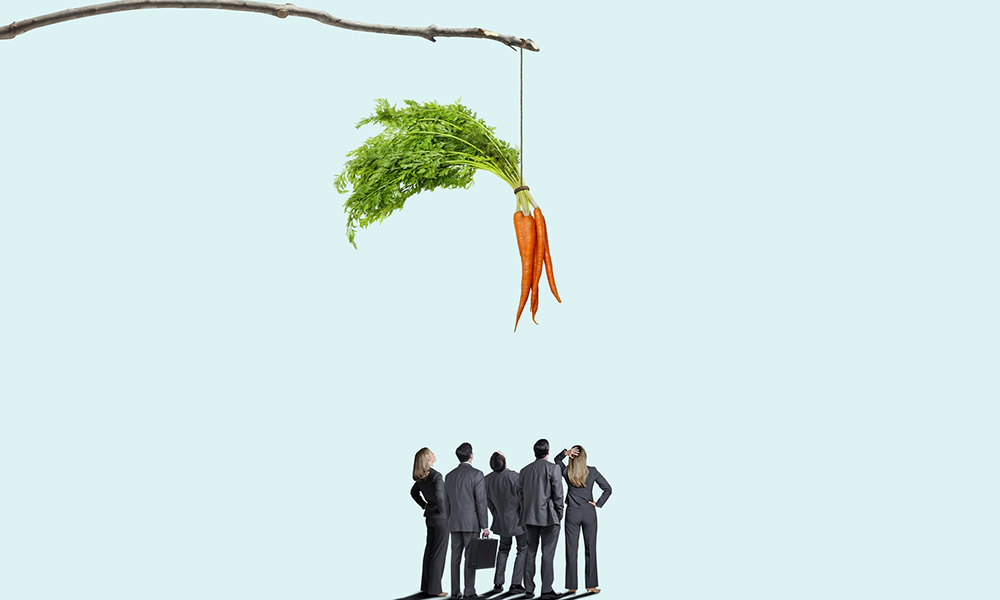For a long time, lunch was a convenient window for me to catch up with someone on the team, check in on how they were doing, and have a real conversation. It wasn’t some grand strategy; it just worked. Lunch one-on-ones became a small but effective rhythm in my week.
But over time, that rhythm faded. The calendar filled up, travel picked up, and lunch gradually turned into something I either skipped or squeezed in while answering emails. I didn’t notice the shift right away. It just happened.
Lately, though, I’ve been reminded of what I was missing. At the Lightspeed office in Delhi, there’s a quiet lunchtime ritual that’s taken root: the team eats together. No sign-ups, no pressure — just whoever’s around gathers in the lunchroom at 1 pm. It’s informal, inclusive, and full of laughter. Sometimes, when I’m heads-down at my desk, someone will come over and say, “Hey, come join us.” That small gesture — someone reaching out to include you — is surprisingly powerful. It’s also a good reminder: food might not solve everything, but it’s a great place to start.
When calendars are crammed and productivity is prized above all else, stepping away for lunch with colleagues can feel like a nice-to-have, but it’s often one of the most effective, overlooked levers for connection and clarity at work.
Historically, many Indians have always eaten in a group setting, even at work. The shared enjoyment of a meal creates the perfect opportunity to exchange news, tell stories, vent and bond — all ways in which we connect as humans and build a sense of community. Unfortunately, things are fast changing.
For many professionals in today’s corporate India, lunch is hastily consumed at a desk, often between back-to-back meetings or during email marathons.
Ironically, eating lunch alone at your desk can actively undermine engagement and performance. Not to mention its negative impact on team dynamics and personal well-being. All of which add up to a simple truth: desktop dining isn’t the flex some people think it is!
On the other hand, taking a lunch break with colleagues offers benefits that range from increased creativity to strengthened connections. Let’s explore the value of sharing a meal at work — along with ways to make it happen — in this week’s post.
Research shows that having lunch with co-workers isn’t just enjoyable, it also creates significant positive impacts such as:
1. Breaking down barriers.
When done right, eating together can help dissolve professional and social hierarchies, allowing authentic conversations to emerge. As Professor Kevin Kniffin of Cornell University observed when speaking to the Harvard Business Review:
Sharing a meal seems to have the potential to temporarily relax some of the hierarchical relationships that people otherwise might have through their work connections.
2. Brain reboot.
Skipping lunch to power through your to-do list may seem productive, but it tends to erode morale and concentration. Beyond social interaction, shared meals offer a space to decompress, reduce stress and clear mental clutter. The result? Renewed inspiration, energy, and focus to keep you going through the second half of the workday.
3. Growing together.
The Lunch Project was a four-week, cross-country experiment conducted by Vasundhara Sawhney, an editor at Harvard Business Review. As part of the project, professionals who usually lunched alone started eating with their colleagues. At the end of the month, participants reported a surge in trust, openness and spontaneous creativity. Ideas flowed organically around topics ranging from digital strategy to sustainability, showing that even a modest 30-minute break can yield remarkable collaborative returns.
It’s worth noting that things felt a little awkward at first. But within days, the lunch-breakers became comfortable with each other, switching gears from “why are we doing this?” to “why didn’t we do this sooner?”.
4. More joy, better output.
When people take the time to dine with their co-workers, everyone wins. Studies show that employees who take a daily lunch break are more engaged at work, reporting higher productivity and job satisfaction. They’re also more likely to recommend the company to others.
5. Conversations that count.
Workplace lunch gatherings often double as professional opportunities, providing an informal platform to increase your visibility through impromptu brainstorms and cross-functional chats. Building relationships over a meal can also pave the way for mentorship, new initiatives and career guidance, all without the pressure of an official meeting.
6. A stronger foundation.
Like the small talk that takes place around water coolers, lunchtime chitchat can yield key pieces of knowledge and vital insights, enabling employees to perform their jobs more effectively. Plus, these casual hours lay the groundwork for deeper, more significant interactions. As workplace psychologist Jennifer Newman explains:
The friendly tone set when colleagues eat together can support more intense conversations later in the day.
When divisions deepen
The lunch table can sometimes mirror social hierarchies instead of dissolving them. When shared meals become a clique-y affair, social and professional barriers can become even more deeply entrenched. People may find themselves excluded due to various factors, including social status, ethnic background, age, dietary preferences, and neurodivergence. This is definitely something to watch out for, whether you’re a leader, an HR professional or an employee. Let’s be kind, inclusive and erase lines, not reinforce them.
Around the globe
Of course, cultural norms have a lot to do with how people spend their lunchtime. For example, Spain is still known for its leisurely shared lunches, with people lingering at the table long after the last morsel is gone — and some even going home for the meal! At the other end of the spectrum, we have the US, where 62% of workers eat lunch alone at their desks.
While data for India is scarce, I think most people in the corporate world would agree that lunch breaks have become increasingly compressed, especially in competitive, fast-paced industries.
Make the most of your lunch break
Here are six ways to make the shift from desktop lunching to shared breaks that are inclusive, accessible and fun:
1. Lunch from the top.
When leaders visibly participate in shared lunches, they signal permission for others to do the same. This means leaving your desk to eat, preferably in the cafeteria. By doing so, you create psychological safety, empowering your employees to take their lunch break without needing to look ‘busy’.
2. Break bread with everyone.
Sharing meals with co-workers across ranks and departments sets the tone for a positive and supportive lunchtime dynamic. By modelling inclusive behaviour, leaders and managers can ensure that everyone gets a seat at the table.
3. Curb midday meetings.
As far as possible, stop scheduling and accepting meeting invites that overlap with lunchtime. Be upfront about the reason. If the meeting is supposed to happen in person at the office, you could suggest connecting informally over lunch and scheduling the formal meeting at a different time.
4. Design for flexibility.
Are you in charge of organising team lunches at your workplace? If yes, be flexible about it. Give people the option to join when they can. Be respectful of dietary choices. Explore different modes of connection, such as a potluck where everyone brings a dish from their culture, a lunchtime networking event with leaders, or even a brief coffee meetup during busy weeks.
5. Find your rhythm.
Not everyone finds value in daily group lunches. Introverts, for instance, may find it daunting to socialise excessively and benefit more from solo recharge time. If that sounds like you, try to share a meal with your colleagues a couple of times a week. On other days, take your lunch break in a quiet spot.
And if you’re an extrovert, resist the temptation to badger your more introverted co-workers to come along for lunch every day! Remember, selective engagement often works better than forced participation. Even occasional participation can make a meaningful difference in morale and camaraderie.
6. Connect with yourself.
Lunch breaks are worth taking, even if you work remotely. Many WFH employees routinely eat in front of their computer screens, which can lead to energy drain, mental fog and burnout. Taking a proper lunch break gives your brain a chance to relax and refresh, which in turn sharpens focus and unlocks new perspectives during the second half of the workday. As a bonus, people who quit desktop dining also find themselves eating healthier.
So, the next time you find yourself wolfing down lunch between emails or skipping it altogether, pause for a second. What if that half-hour wasn’t a gap in your productivity — but a lever for it?
A shared meal won’t fix broken systems or magically build culture. But it’s a damn good start. It signals openness. It builds trust. It creates the kind of unplanned, unscripted space where real connection happens. And in the long run, that’s what powers great teams.
So shut the laptop. Leave your desk. Go find your team.
Because sometimes, the most important conversations aren’t on the agenda. They’re at the lunch table.








Comments